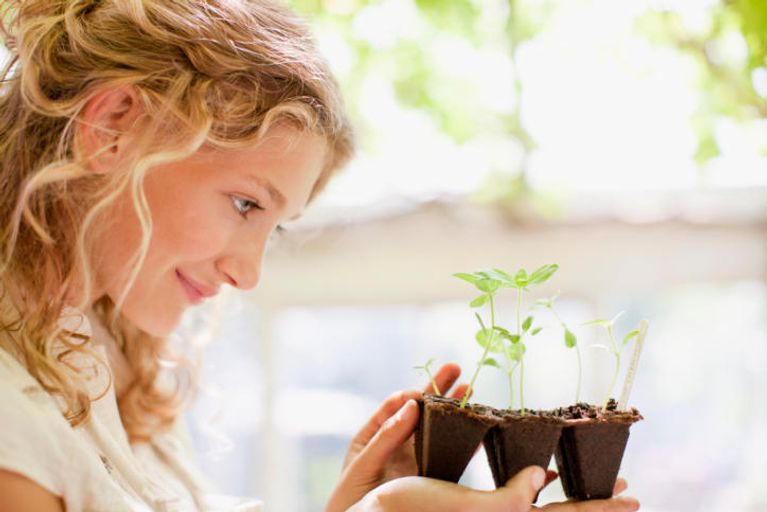Gardening 101: Five steps to get your garden started

It’s that time of year again, the time you start daydreaming of canning homemade salsas and tabling fresh salads made completely from ingredients pulled from your home garden. Only, er, maybe you haven’t gardened before and don’t know where to start. If so, here is a five-point plan to get your garden on this year.
1. Do your homework: If your thumb isn’t yet remotely green, start with some research. “So before you even break soil, pick up some books from the library or the Internet to get a plan in place of what you’d like,” said Michael Van Dongen of Van Dongen’s Landscaping and Nurseries Ltd. in Hornby, Ont. That way you can determine what kind of plot you have, and what sorts of vegetables and flowers might do well there. Stuck for research? We like OntarioGardening.com or MarkCullen.com.
Van Dongen also suggests planning small at first. “That way you can let that small area expand from there, because if you try and do too much at once, it can be overwhelming,” he said. “And when you start small, you can decide whether you like it or not because not everyone’s got a green thumb and enjoys it.”
2. Plan your plot: After picking the sunniest spot in your yard or balcony, minimizing the changes of mold and mildew getting at your plants, you can pick from plants that are practically bulletproof. “Snapdragons are prolific flowers to grow. I sometimes let mine sit and they reseed themselves and they come up the following year,” Van Dongen said. “Geraniums and marigolds are also tougher, so if we get a cold snap, it won’t harm them too much.” As for a vegetable bounty, Van Dongen recommends root crops such as carrots, beets and onions, which are all tougher plants and can better sustain weather changes.
3. Prep your plot: Once the weather is warm enough, you can cut out a garden plot by digging down about four to six inches and then build it up another four inches of mixed soil and compost, said Van Dongen, who also recommends working that soil a bit. “You can get compost from your local garden centre or municipality to enrich the soil. So lay it down and work it in with a fork or cultivator.”
4. Pick your packs: Once the threat of morning frost is gone, you can start transferring starter packs of plants to the outdoors. While you can still plant some things such as carrots, from seeds, starter plants or flowers will practically guarantee you have some outdoor growth this year. “Buying starter plants might cost you say $1.40 for a 4 pack of plants,” said Van Dongen. “It’s a minimal investment for something that you can probably benefit greatly from.”
When you are planting, Van Dongen recommends using a light touch — don’t plant too many seeds or packs. “You have to be careful with how much you plant because if it’s a good year, you don’t know how much you can yield and you feel bad wasting it,” he said.
5. Maintain your growth: From here on in, it’s maintenance, maintenance, maintenance — that includes monitoring the growth, keeping track of watering your plants, weeding, watching for pests, fertilizing regularly and more. And then come August, you can proudly pick and can that salsa. “That’s what I like about gardening — that sense of accomplishment,” Van Dongen said. “And there’s nothing like going out to your garden and picking a cherry tomato off and eating it. You’re putting your own food on the table.”
GET CHATELAINE IN YOUR INBOX!
Subscribe to our newsletters for our very best stories, recipes, style and shopping tips, horoscopes and special offers.